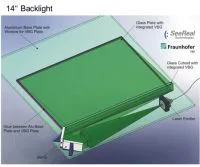(If this story looks familiar, we covered it last week [Fraunhofer Coatings Enable Full-Laser Backlights], but Chris got a lot of extra information.)
Fraunhofer Institute for Organic Electronics, Electron Beam and Plasma Technology (FEP) has developed and manufactured an anti-reflective coating stack that is a key element of a backlight for laser-based holographic displays. The display is being developed at SeeReal Technologies GmbH, but will not be shown at SID Display Week. However, a prototype of the backlight can be seen during the SID Display Week in San Jose this year at the Fraunhofer booth.
The graphic below illustrates the schematic configuration of such a backlight for a holographic display. It shows a laser that is expanding and then collimated by a lens. Two mirrors redirect the collimated beam onto a strip of glass with the length of the long side of the backlight. The incident angle is only 5 degrees (85 degrees to the normal) so that the collimated beam is expanded by factor of 10 in one direction. The light enters the glass because of the AR coating and its deflection by a VBG (volume Bragg grating) normal to the glass surface. So, a 1:10 length ratio beam is formed and will hit the second expansion in the other direction.
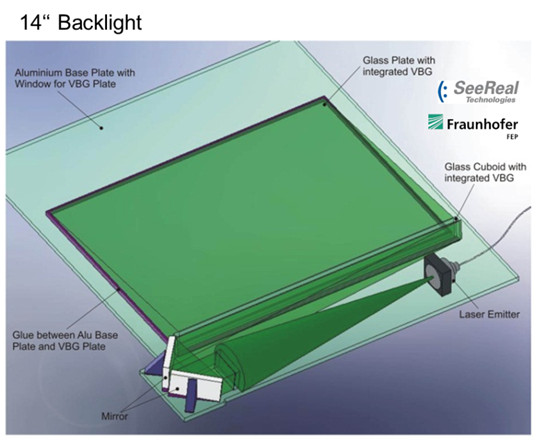
You can imagine if you place a flashlight on a table the elongated illumination cone this would form. The same is true for the laser light that illuminated the plate in front of the entrance to the waveguide. It is illuminating this plate at a glancing 5-degrees and the objective is to turn the light to 90 degrees to couple into the second plate of the backlight.
Normally, about 73% of the light would be reflected at this glancing 5-degree angle, noted Dr. Daniel Glöß, head of the “Dynamic coatings” department of the “Precision Coatings” division at FEP. That is why FEP developed anti-reflective coatings for the glass plate.
Captured light then exits the first plate in a 90 degree angle but must now be extended in the second direction. A second set of AR coated plates and deflection gratings does this.
The coatings are 24 layers each, which is not as high as some specialized coatings which can run to 100 layers or more. The layer system is designed to withstand some deviations (+/- 1%) without losing the anti-reflective property. The challenging part, according to Glöß, is maintaining the tight tolerance for all layers over the full area of the plate. He likened this to maintaining the thickness of each layer to within approx. one-hundredth of the thickness of a human hair if the coated surface was as large as a football field!
To do this, FEP worked with equipment supplier Von Ardenne to develop a new coating machine that uses reactive magnetron sputtering with in-situ monitoring using an ellipsometer.
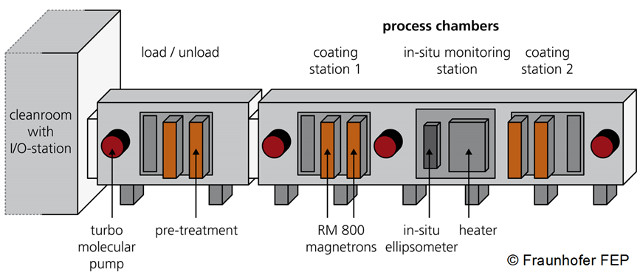
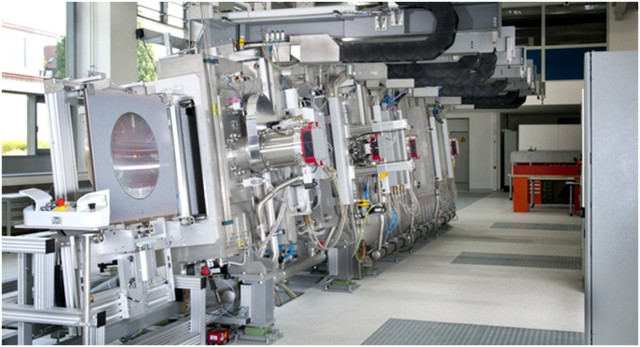
The coatings are optimized for anti-reflection at 457, 532 and 644 nm for the red, blue and green lasers used in the SeeReal display. Glöß noted that because of the two step architecture, 90% would normally be lost by reflection. But the goal was to have less than 10% loss, which was achieved by incredibly tight tolerance.
The equipment can coat plates up to 650 x 750 mm, with the rectangular strips cut from these plates to attach to the backlight. So far, 14” backlights and working holographic displays have been made and at least double of this size is possible.
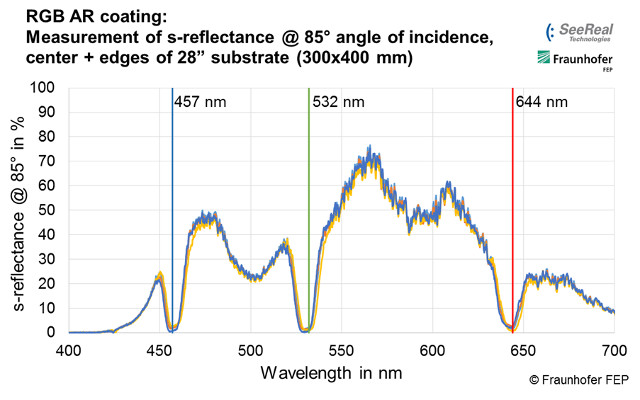 Optical performance in spec all over the substrate surface, Deviation <±1%
Optical performance in spec all over the substrate surface, Deviation <±1%
Fraunhofer FEP will be at SID Display Week to provide more information about the AR layer stack and the referring coating technology.

